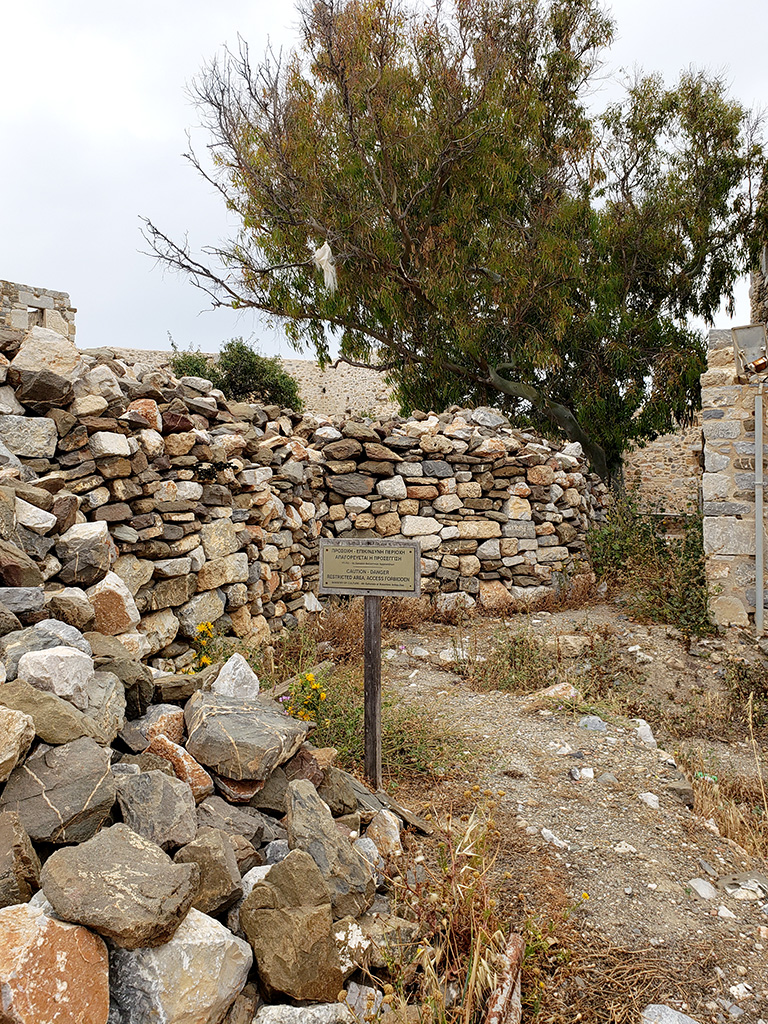
After winding our way up through the heart of Astypalea’s Chora, we finally found ourselves in the stony castle (aka kastro or castro) that dominates the top of the hill. Entrance was through an arched tunnel, where we also found some signboards with information about the history of the castle.

But aside from those few signs, the castle is in a mostly ruined state. The castle had previously contained many residential buildings, but fortunately most were uninhabited by the time they “collapsed like a house of cards” in an earthquake in 1956. The Amorgos Earthquake was the largest to strike Greece in the 20th century, and 53 people across multiple nearby islands died in the quake and the tsunami that followed.



According to the signage, efforts to rebuild and clean up the castle to make it more appealing to tourists have been ongoing for decades, but are progressing slowly due to “rate of weathering, nature of foundations, property rights and lack of archaeological documentation.” I personally like the crumbling vibe, but it looks like a rewarding site for archaeologists to dig systematically. I wonder what the Time Team doing these days?


The castle area was interesting to (carefully) explore, with beautiful views in all directions. From here we could see some of the tiny uninhabited islands off Astypalea’s southeast coast, including the alluringly named Mosquito (κουνούπι) Island.

The castle was initially constructed by a Venetian named Giovanni Querini in 1413. Over the following centuries, when Astypalea was part of the Ottoman Empire, the castle served to defend residents from frequent waves of marauding pirates. The surrounding houses of the Chora were also part of the defensive system, creating narrow access points to bottleneck and repel invaders. Only in the 18th century did the threat of piracy ease.

Some areas of the castle are deemed unsafe to explore, so we avoided those. Who are we to disobey an order from the 4th Ephorate of Byzantine Antiquities?


A small church called the Church of Saint George (Άγιος Γεώργιος) sits inside the castle, and it seems to have been restored and maintained. It is the only whitewashed building we saw inside the walls.


Colourful flowers, including what we believe are poppies, are scattered throughout the castle grounds.
